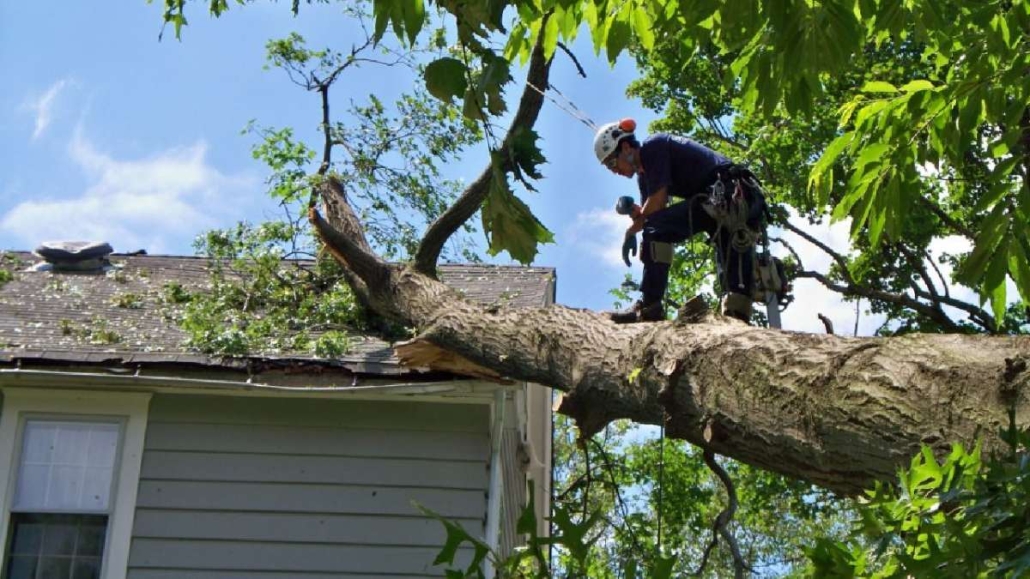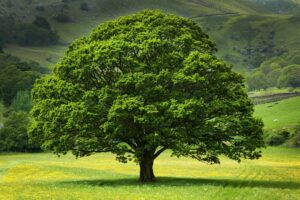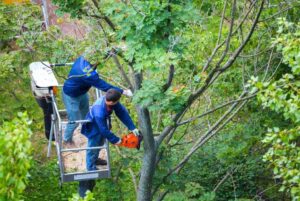Felling Dangerous Trees: The Complete Guide
When you’re faced with a towering hazard in your yard or on your property, knowing how to safely remove a dangerous tree becomes critical knowledge. Whether damaged by storms, disease, or simply reaching the end of its lifecycle, dangerous trees pose significant risks to your home, family, and surrounding structures. This comprehensive guide will walk you through everything you need to know about identifying, assessing, and safely removing hazardous trees before they cause damage or injury.
Understanding What Makes a Tree Dangerous
Not all declining trees require immediate removal. To make informed decisions about tree management on your property, you first need to understand what characteristics classify a tree as genuinely dangerous.
Recognizing the Warning Signs
Trees communicate their distress through various visual cues. Learning to recognize these warning signs can help you identify potential hazards before they become emergencies. Some key indicators that your tree may be dangerous include:
Structural Issues
- Large dead branches or a partially dead crown
- Cracks extending deep into the wood of the trunk
- Hollow areas or large cavities within the main trunk
- Leaning more than 15 degrees from vertical, especially with recent root exposure
- Multiple trunks with weak attachment points or included bark
- Previous branch failures in the same tree
Health Indicators
- Fungal bodies (mushrooms or conks) growing from the base or trunk
- Extensive bark loss or unusual peeling
- Fine twigs absent from the outer branches for multiple years
- Premature fall color or leaf drop
According to the USDA Forest Service, approximately 100 people are killed each year in the United States by falling trees or branches, with thousands more suffering injuries. Many of these incidents could have been prevented through proper identification and management of hazardous trees.
The U.S. Department of Agriculture provides extensive resources on identifying hazardous defects in trees, which can help you make more informed assessments of the trees on your property.
Assessing the Level of Risk
Not all dangerous trees present the same level of risk. Understanding how to assess the potential hazard will help you prioritize which trees need immediate attention and which can be addressed with less urgency.
The Risk Assessment Triangle
Arborists evaluate tree risk using three primary factors:
- Tree Defect Severity – How serious is the tree’s condition?
- Target Value – What could be damaged if the tree fails?
- Failure Potential – How likely is it that the tree will fail?
When assessing trees on your property, consider each of these factors carefully. A severely damaged tree near your home presents a much higher risk than a similarly damaged tree in a remote corner of your property.
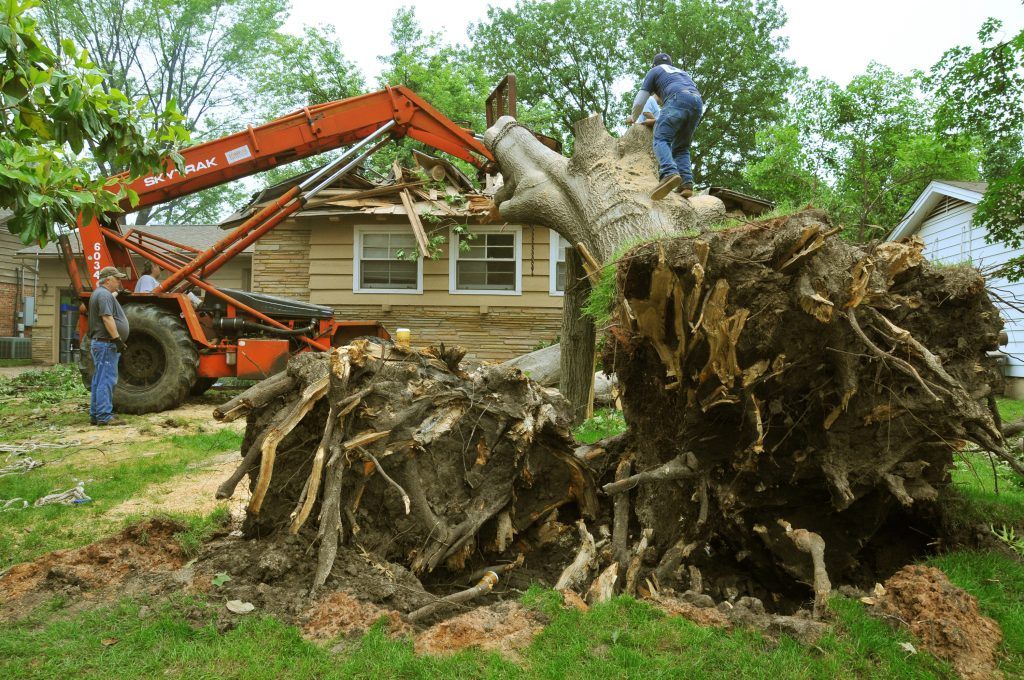
Quantifying Risk Levels
The following table provides a framework for determining the risk level of trees on your property:
| Risk Factor | Low Risk | Moderate Risk | High Risk | Extreme Risk |
|---|---|---|---|---|
| Tree Condition | Minor defects only | Visible defects, but sound structure | Multiple serious defects | Major structural failure imminent |
| Target Exposure | Rarely used area | Occasionally used area | Frequently used area | Constant occupation (house, playground) |
| Size of Defective Part | Small branches (<2″) | Medium branches (2-6″) | Large branches (>6″) | Entire tree |
| Occupancy Period | Rare (few hours/year) | Occasional (weekly) | Frequent (daily) | Constant (24/7) |
| Recommended Action | Monitor annually | Professional assessment | Prompt mitigation | Immediate removal |
Trees falling into the high or extreme risk categories typically require professional intervention, while those in the moderate category should be regularly monitored and evaluated by a certified arborist.
Planning for Safe Tree Removal
Once you’ve identified a dangerous tree that needs to be removed, careful planning becomes essential for a safe and effective removal process. Rushing into tree felling without proper preparation significantly increases the risks involved.
Site Evaluation Checklist
Before beginning any tree removal operation, you should conduct a thorough site evaluation. Consider the following factors:
Tree Characteristics
- Height and diameter of the tree
- Species (hardwood vs. softwood)
- Lean direction and severity
- Distribution of weight in the canopy
- Presence of dead branches or widow makers
- Signs of internal decay or structural weakness
Site Conditions
- Available falling space in all directions
- Obstacles within two tree-lengths of the tree
- Slope of the ground
- Wind direction and strength
- Proximity to structures or utility lines
- Underground utilities or septic systems
- Soil conditions, especially after heavy rain
Equipment and Personnel
- Proper safety gear availability
- Appropriate tools for the job
- Communication plans for the work area
- Escape routes (at 45-degree angles from the fall line)
- First aid supplies and emergency contacts
The Occupational Safety and Health Administration (OSHA) provides detailed guidelines for tree felling operations that can be found on their official website. Following these guidelines can help ensure your safety during the removal process.
DIY vs. Professional Removal
One of the most important decisions you’ll make regarding a dangerous tree is whether to remove it yourself or hire a professional arborist. While DIY removal may seem cost-effective, it often presents significant risks, especially for novices.
The table below outlines scenarios when DIY removal might be appropriate versus when professional help is essential:
| Consideration | DIY Appropriate | Professional Required |
|---|---|---|
| Tree Height | Under 20 feet | Over 20 feet |
| Diameter | Less than 10 inches | Greater than 10 inches |
| Location | Clear falling area with no obstacles | Near structures, power lines, or other obstacles |
| Tree Condition | Healthy, minimal decay | Dead, diseased, or structurally compromised |
| Required Equipment | Basic hand tools and chainsaw | Specialized equipment (bucket trucks, cranes, rigging) |
| Experience Level | Experience with proper cutting techniques | Limited experience with tree felling |
| Hazards | Minimal complications | Multiple risk factors present |
| Accessibility | Easy ground access | Difficult access or working conditions |
According to the Tree Care Industry Association, approximately 580,000 trees are removed annually in the United States by professional tree care companies, with a significant percentage classified as hazardous removals. The average cost for professional removal ranges from $400 to $2,000, depending on size and complexity, but this investment significantly reduces the risk of property damage and personal injury.
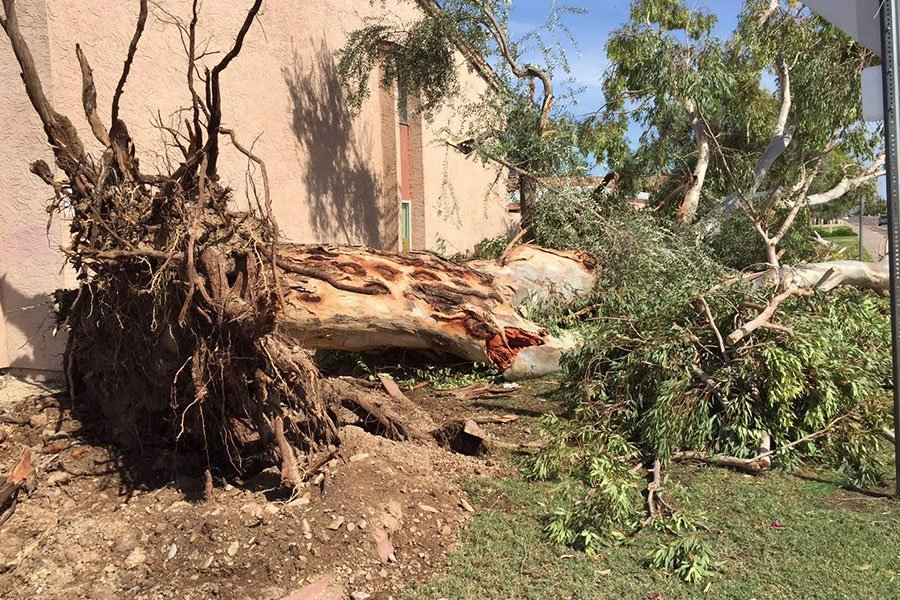
Essential Equipment and Safety Gear
Whether you’re tackling the tree removal yourself or simply need to understand what professionals will be using, knowing the essential equipment and safety gear for tree felling operations is valuable information.
Personal Protective Equipment (PPE)
When dealing with dangerous trees, personal safety should be your highest priority. At minimum, you should have:
Head Protection
- Forestry helmet with integrated face shield and ear protection
- Safety glasses with side shields
Body Protection
- Chainsaw chaps or pants with cut-resistant material
- High-visibility work vest or jacket
- Heavy-duty work gloves
- Steel-toed or composite-toe boots with good ankle support
Additional Safety Equipment
- First aid kit specifically designed for logging injuries
- Communication device (radio or cell phone)
- Whistle for emergency signaling
- Sufficient water and safety documents
The U.S. Consumer Product Safety Commission reports that inadequate protective equipment contributes to approximately 36,000 chainsaw-related injuries treated in emergency rooms annually. Proper PPE can significantly reduce both the frequency and severity of these injuries.
Felling Tools and Equipment
Beyond personal protection, you’ll need specialized tools for the actual tree removal:
Essential Tools
- Professional-grade chainsaw with proper bar length
- Wedges (plastic or aluminum)
- Sledgehammer or mallet for driving wedges
- Felling lever or breaking bar
- Axe or hatchet
- Rope (at least 1.5 times the tree height)
- Gas and oil for equipment
- Tool maintenance supplies
Advanced Equipment (for larger operations)
- Stump grinder
- Wood chipper
- Rigging equipment
- Heavy machinery for log movement
According to a study published by the National Institutes of Health, using proper equipment and following safety protocols can reduce the risk of injury during tree removal operations by up to 74%. This significant reduction underscores the importance of not cutting corners when it comes to safety equipment.
Proven Techniques for Safely Felling Dangerous Trees
With proper preparation and equipment in place, understanding the correct techniques for felling dangerous trees becomes the next critical component of the removal process.
The Standard Notch and Back Cut Method
For relatively straightforward tree removals, the conventional notch and back cut method provides a controlled way to direct the tree’s fall:
- Plan your notch – The notch should face the direction you want the tree to fall.
- Create the top cut – Make a downward angled cut about one-third of the way through the trunk.
- Make the bottom cut – Cut upward to meet the end of your top cut, creating a 70-degree notch.
- Execute the back cut – On the opposite side of the notch, make a horizontal cut slightly above the bottom of the notch, leaving a “hinge” of wood about 10% of the trunk diameter.
- Insert wedges – For trees that are leaning slightly away from the intended fall direction, insert wedges into the back cut to prevent binding and help control direction.
- Retreat safely – Move away from the tree at a 45-degree angle opposite the fall direction, watching for falling debris.
This standard approach works well for trees with a slight lean in the intended fall direction and minimal defects. However, dangerous trees often require modifications to this technique.
Advanced Techniques for Hazardous Situations
When dealing with trees that have significant structural issues or complex surroundings, specialized cutting techniques may be necessary:
Open-Face Notch Technique
- Creates a wider 90-degree notch
- Provides greater control during the entire falling process
- Recommended for trees with decay or structural weakness
Bore Cutting Method
- Involves boring through the center of the trunk before completing the back cut
- Helps prevent barber-chairing (vertical splitting) in trees with significant tension
- Essential for trees with heavy lean opposite the desired fall direction
Sectional Dismantling
- Removing the tree in small sections from top to bottom
- Required when there’s insufficient space for whole-tree felling
- Usually involves rigging equipment and is best left to professionals
A ten-year study conducted by the National Timber Harvesting and Transportation Safety Foundation found that improper cutting techniques contributed to 35% of severe injuries during tree removal operations. Taking the time to learn and apply the correct technique for each specific situation significantly improves safety outcomes.
Special Considerations for Storm-Damaged Trees
Trees damaged by storms present unique challenges and heightened risks:
Suspended or Partially Fallen Trees
- Evaluate the points of contact and potential movement
- Use winches or come-alongs to control the final cutting
- Never work directly underneath suspended material
Trees with Split Trunks
- Assess which portions are under compression versus tension
- Cut the compression side first, then the tension side
- Consider sectional removal rather than whole-tree felling
Trees with Multiple Hazards
- Prioritize the removal of the most dangerous portions first
- Establish wider safety zones for all personnel
- Consider mechanical assistance (cranes or bucket trucks)
The Federal Emergency Management Agency (FEMA) provides detailed guidelines for handling hazardous trees after disasters, which can be particularly valuable when dealing with storm damage.
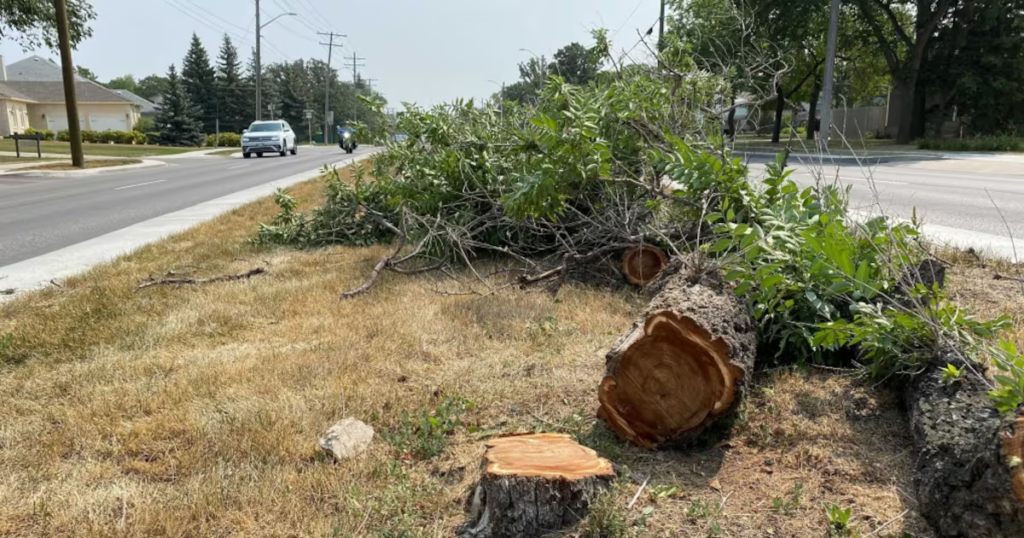
Legal Considerations and Regulations
Tree removal, especially of dangerous trees, intersects with various legal considerations that property owners should understand before proceeding.
Property Boundaries and Ownership
Before removing any tree, confirm:
- The tree is entirely on your property
- Your deed doesn’t contain any tree preservation covenants
- There are no boundary disputes with neighbors
If a dangerous tree straddles property lines, written permission from all affected property owners is typically required before removal. In some cases, the cost of removal may be shared between property owners.
Local Regulations and Permits
Tree removal regulations vary significantly by location:
- Urban Areas – Many cities require permits for removing trees above certain diameters, regardless of condition.
- Historic Districts – Additional restrictions often apply in designated historic neighborhoods.
- Protected Species – Some tree species receive special protection under local or state law.
- Wetland Areas – Trees in designated wetlands typically face stricter removal regulations.
According to data from the Arbor Day Foundation, approximately 67% of U.S. municipalities have some form of tree protection ordinance. These ordinances frequently include specific provisions for hazardous trees, often streamlining the permit process when immediate removal is necessary for safety reasons.
Emergency Provisions
Most jurisdictions include emergency provisions for imminent hazards:
- Documentation of the hazardous condition (photographs, arborist reports)
- Notification to the appropriate municipal department
- Expedited permit processes or post-removal notification
The U.S. Department of Housing and Urban Development offers guidance on tree hazard management for homeowners, including information about navigating local regulations during emergency situations.
Post-Removal Considerations
Once a dangerous tree has been successfully removed, several important considerations remain regarding the cleanup, wood utilization, and future landscaping of the area.
Stump Management Options
After felling, you’ll need to decide how to handle the remaining stump:
Complete Removal
- Grinding (most common method for residential properties)
- Excavation (removes the entire root system)
- Chemical treatment (slower process using potassium nitrate)
Partial Treatment
- Cutting flush to ground
- Covering with soil and mulch
- Decorative repurposing (carving, using as a planter)
The Environmental Protection Agency provides guidance on sustainable practices for wood waste management, including options for tree stumps and larger debris.
Wood Utilization Opportunities
Rather than treating all removed tree material as waste, consider these productive uses:
Lumber Applications
- Milling for construction lumber (if sufficient straight sections exist)
- Creating natural-edge slabs for furniture
- Producing fence posts or landscape timbers
Firewood and Mulch
- Processing appropriate sections into firewood
- Chipping smaller branches for landscape mulch
- Donating excess to community gardens or parks
Wildlife Habitat
- Creating brush piles for small animals
- Leaving larger logs as nurse logs in wooded areas
- Constructing insect hotels from hollow sections
A study by the USDA Forest Products Laboratory found that approximately 58% of urban tree removals result in wood that could be repurposed for higher-value uses, yet only about 15% typically finds such applications.
Replanting Considerations
If the removed tree was an important landscape element, thoughtful replanting can restore the aesthetic and functional benefits:
Species Selection Factors
- Site conditions (soil type, drainage, sun exposure)
- Mature size appropriate for location
- Disease and pest resistance
- Native species benefits
- Climate change resilience
Planting Best Practices
- Proper planting depth (root flare at soil level)
- Adequate planting hole diameter (2-3 times root ball width)
- Mulching without touching the trunk
- Initial staking only when necessary
- Regular watering during establishment
The National Arbor Day Foundation’s Tree City USA program offers extensive resources on appropriate species selection and planting techniques for different regions of the United States.
Prevention: Avoiding Future Dangerous Trees
While this guide focuses primarily on handling trees that have already become hazardous, prevention represents the most cost-effective approach to tree hazard management.
Proactive Tree Care Practices
Implementing these practices can significantly reduce the likelihood of developing dangerous trees on your property:
Regular Inspection
- Annual visual assessment of all large trees
- Professional inspection every 3-5 years
- Additional inspections after severe weather events
Structural Pruning
- Early pruning to establish strong structure
- Removal of competing leaders
- Maintaining appropriate branch spacing and size ratios
Environmental Management
- Preventing soil compaction in root zones
- Maintaining proper mulching practices
- Avoiding mechanical damage to trunks and major roots
- Providing supplemental water during drought conditions
Research published in the Journal of Arboriculture indicates that trees receiving regular maintenance are 64% less likely to develop serious structural defects compared to neglected trees. This preventative approach not only enhances safety but also extends the useful lifespan of valuable landscape trees.
Long-Term Site Planning
Thoughtful placement of new trees can prevent many future hazards:
Strategic Placement
- Appropriate setbacks from structures and utilities
- Grouping trees for wind resistance when possible
- Considering mature size in all dimensions
Species Selection
- Matching species characteristics to site conditions
- Selecting appropriate growth rates and mature sizes
- Diversifying species to reduce vulnerability to pests and diseases
The U.S. Forest Service’s i-Tree program provides valuable tools for homeowners and communities to plan and manage tree populations for maximum benefits and minimum risks.
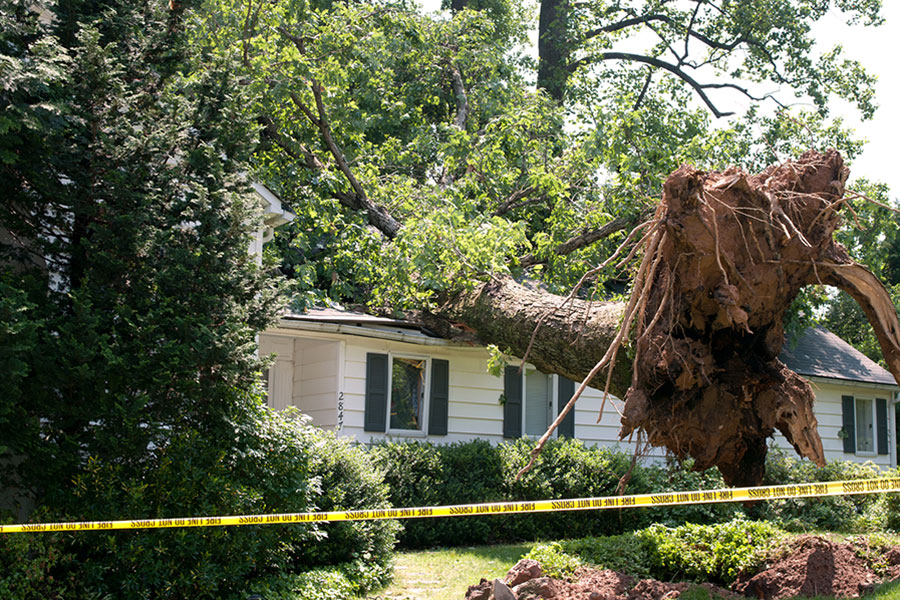
When to Call for Emergency Tree Services
Despite your best preventative efforts, situations may arise where emergency tree services become necessary. Recognizing these scenarios can help protect life and property.
True Tree Emergencies
While many tree issues can wait for scheduled service, these situations warrant immediate professional attention:
Imminent Failure Indicators
- Cracking sounds coming from the tree
- Visible movement of the root plate during winds
- Fresh splits appearing in the trunk or major branches
- Trees leaning against structures or utility lines
Post-Storm Hazards
- Trees partially uprooted but still standing
- Large hanging branches over occupied areas
- Split trunks with one section still attached
- Trees leaning on other trees creating domino potential
Utility Conflicts
- Trees or branches contacting power lines
- Fallen trees preventing emergency vehicle access
- Trees threatening critical infrastructure
According to the Electrical Safety Foundation International, approximately 30% of power outages in the United States are caused by trees and branches contacting power lines. In these situations, always contact the utility company before attempting any removal activities near electrical infrastructure.
Working with Emergency Tree Services
When facing a tree emergency:
- Safety First – Evacuate areas at risk and establish safety perimeters
- Documentation – Photograph conditions for insurance purposes
- Professional Selection – Choose services with emergency response capabilities
- Clear Communication – Provide detailed information about the hazard
- Coordination – Facilitate access for equipment and personnel
The Tree Care Industry Association recommends selecting emergency tree services that employ Certified Treecare Safety Professionals (CTSPs) and maintain appropriate insurance coverage, including worker’s compensation and property damage liability.
Conclusion: Making Informed Decisions About Dangerous Trees
Managing dangerous trees requires balancing immediate safety concerns with long-term property goals, environmental considerations, and financial realities. Throughout this guide, we’ve explored the complex factors involved in identifying, assessing, and removing hazardous trees.
Remember that while tree removal sometimes becomes necessary, preservation should remain the preferred option when safely possible. Many trees with moderate defects can be managed through pruning, cabling, or other arboricultural techniques that preserve their valuable benefits while mitigating risks.
For trees that truly require removal, taking the time to properly plan and execute the process—whether through DIY methods or professional services—ensures the best possible outcomes for safety, property protection, and environmental stewardship.
By combining the knowledge presented in this guide with local resources, such as certified arborists and municipal forestry departments, you’ll be well-equipped to make informed decisions about the dangerous trees on your property and protect what matters most.
For additional information and resources on tree risk assessment and management, visit the USDA Forest Service’s Urban and Community Forestry program website. This comprehensive resource provides science-based guidance for homeowners and communities dealing with tree hazards and general tree care.
